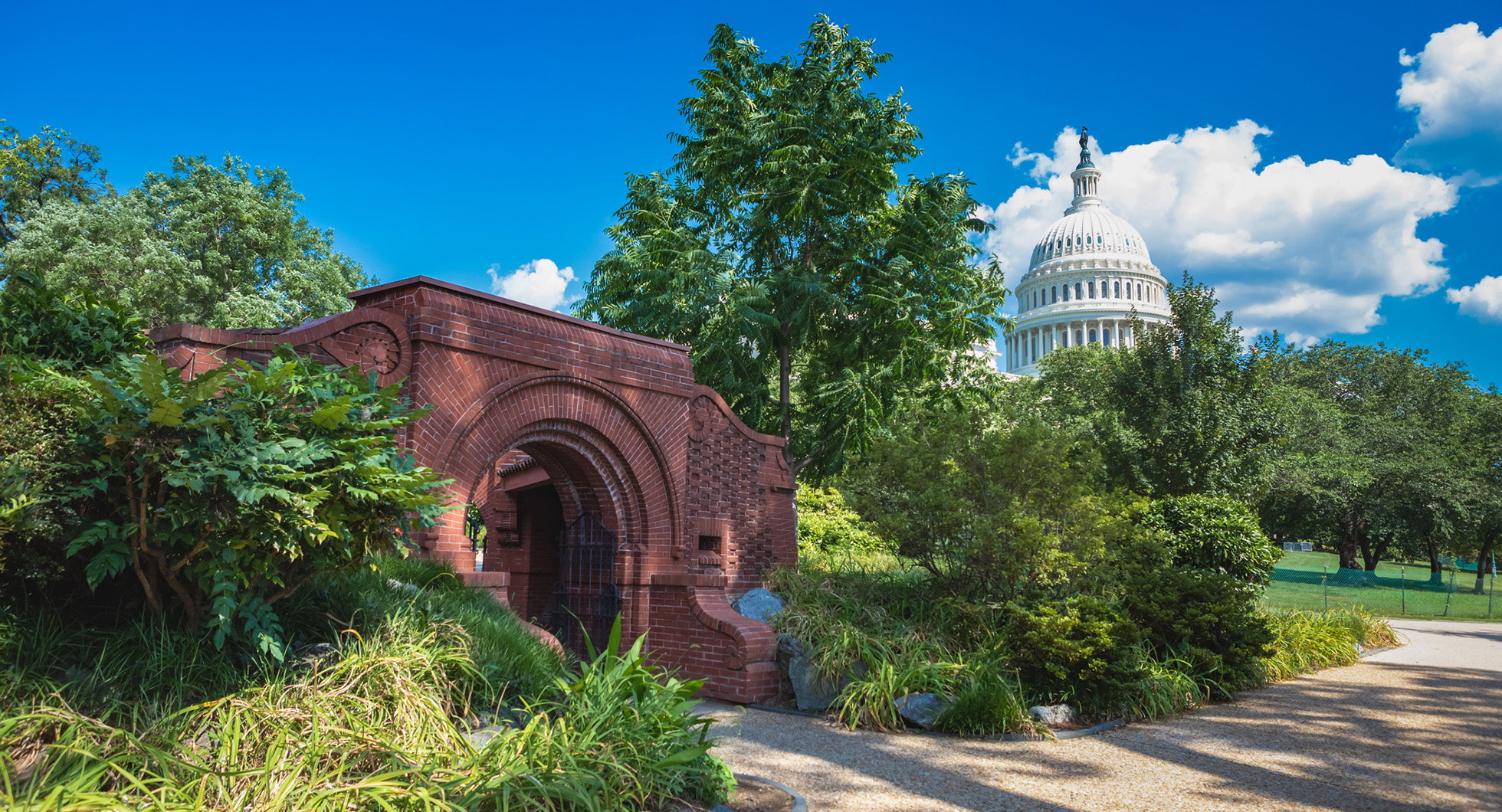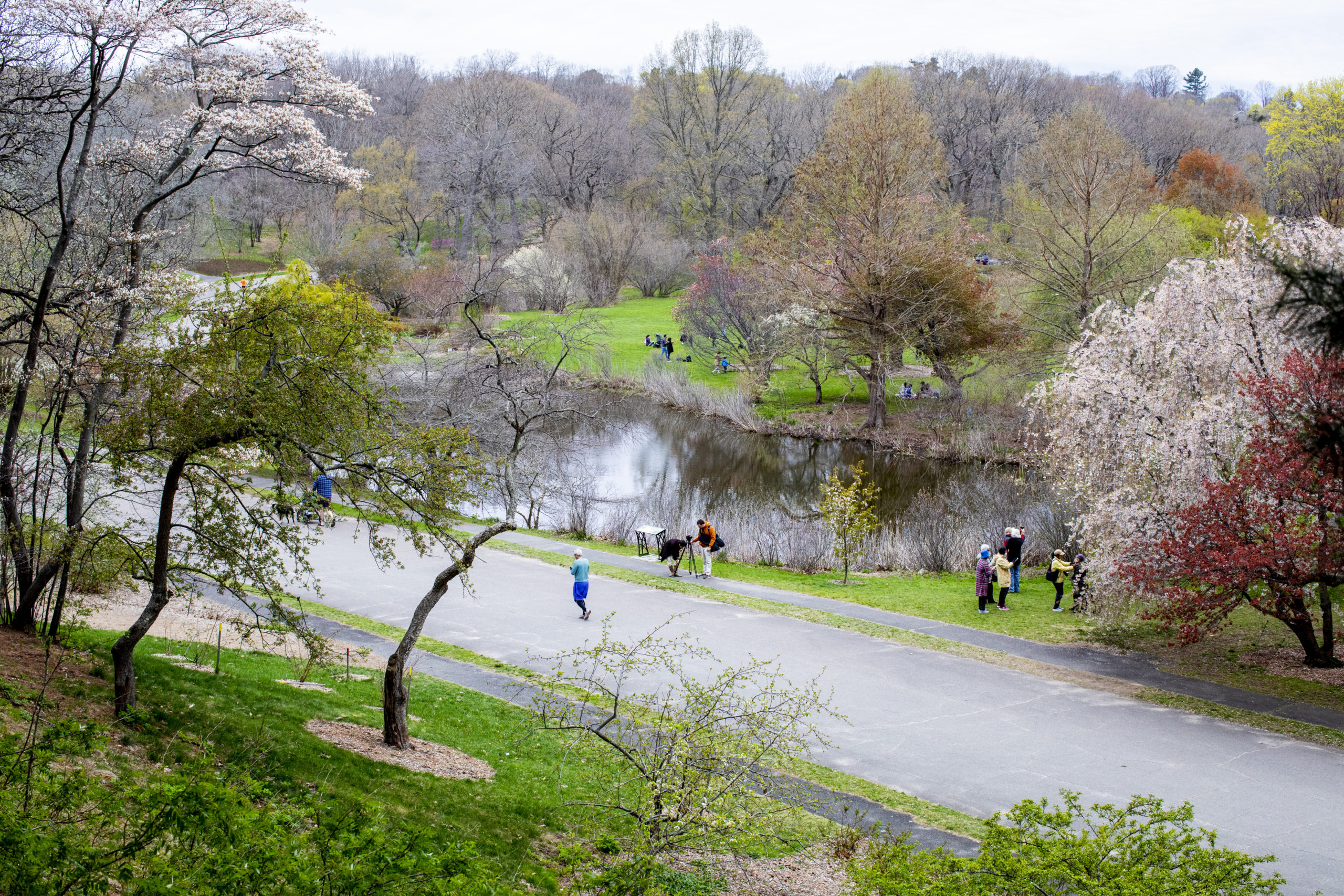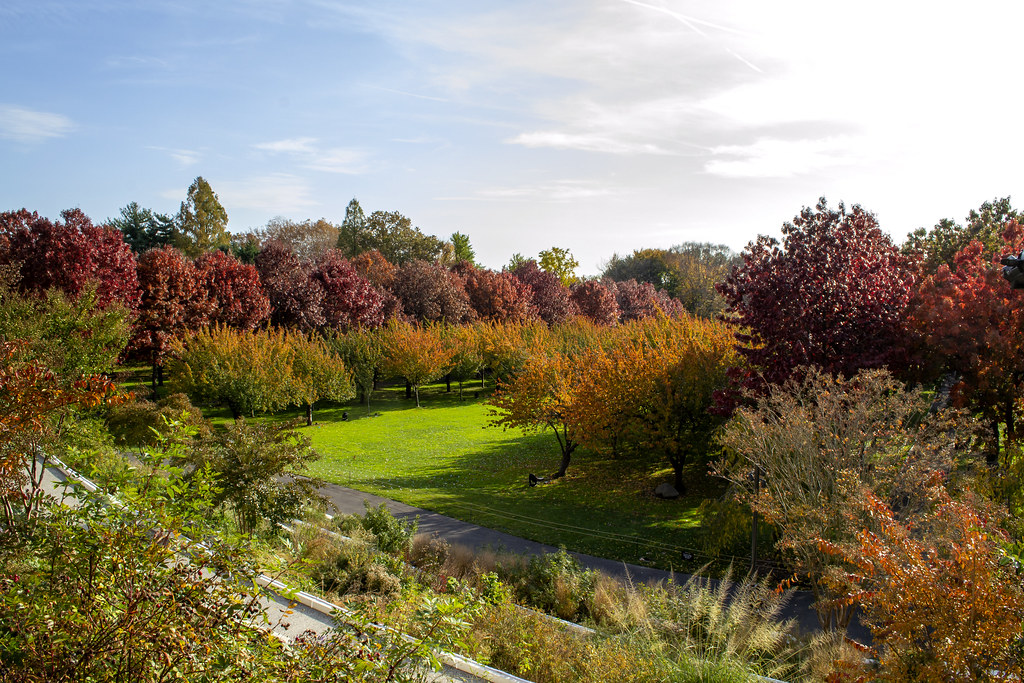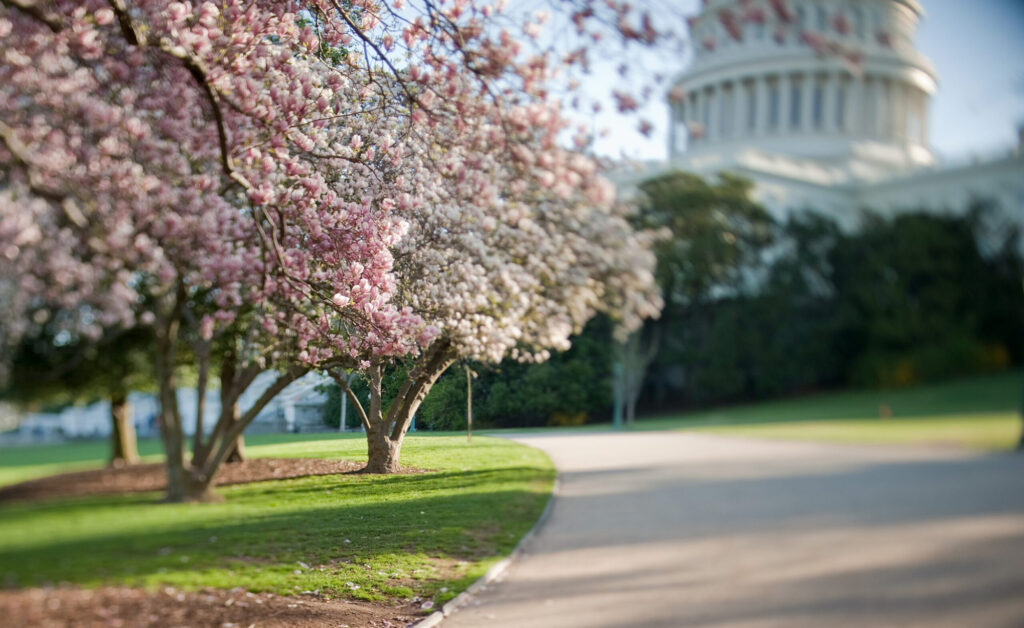
Explosions of white and pink petals filling the air with light, movement, and fragrance— it’s not hard to see why the Japanese consider the cherry blossom to be deeply symbolic and a national emblem. For many Americans, these trees blooming in April are the first glorious indication spring has arrived, but this has only been the case for a little more than a century.
During Frederick Law Olmsted’s lifetime, no lawn in America was ever bespeckled with blossom petals.
North American cherry trees provide succulent fruit and excellent, hard timber but not the spectacular foliage of the Asian varieties. Even though many Olmsted parks now feature cherry blossom trees, the saplings first arrived on these shores in 1912 as gifts from Japan, inspired by the tenacious vision of travel writer Eliza Ruhamah Scidmore.
In 1891, when Scidmore returned to the U.S. from traveling to Japan, she wrote to the U.S. Army Superintendent of the Office of Public Buildings and Grounds and recommended the cherry blossoms be imported and planted on the recently reclaimed Potomac waterfront. For the next 24 years, he and every subsequent superintendent ignored her. Frustrated, Scidmore eventually decided to purchase the trees herself. She wrote of her plan to First Lady, Helen Taft, who had also travelled to Japan. Together, they orchestrated a modest order for the trees. The Japanese government welcomed the idea and ultimately sent 3,020 trees, far more than originally requested.

The original trees were planted around the tidal pool, but cherry blossoms are now sprinkled throughout D.C. and are a major tourist attraction. The National Cherry Blossom Festival (March 20 – April 14) draws spectators from around the world. On the grounds of the nation’s Capitol building, Architect of the Capitol employees care for a dozen different groves with both Yoshino and Japanese flowering varieties (a map is available here).
Many such international gifts followed those planted by Scidmore and Taft in 1912.
A shipment of 2,000 cherry blossoms also arrived in New York City in the same year as a gift from the Japanese residents. Some trees were planted in Riverside Park and others on a hilly patch nearby. In 1938, Olmsted Brothers were hired by John D. Rockefeller to level the ground and create a more formal park that included the trees. Today, it is called Sakura Park, after the Japanese word for cherry blossom.
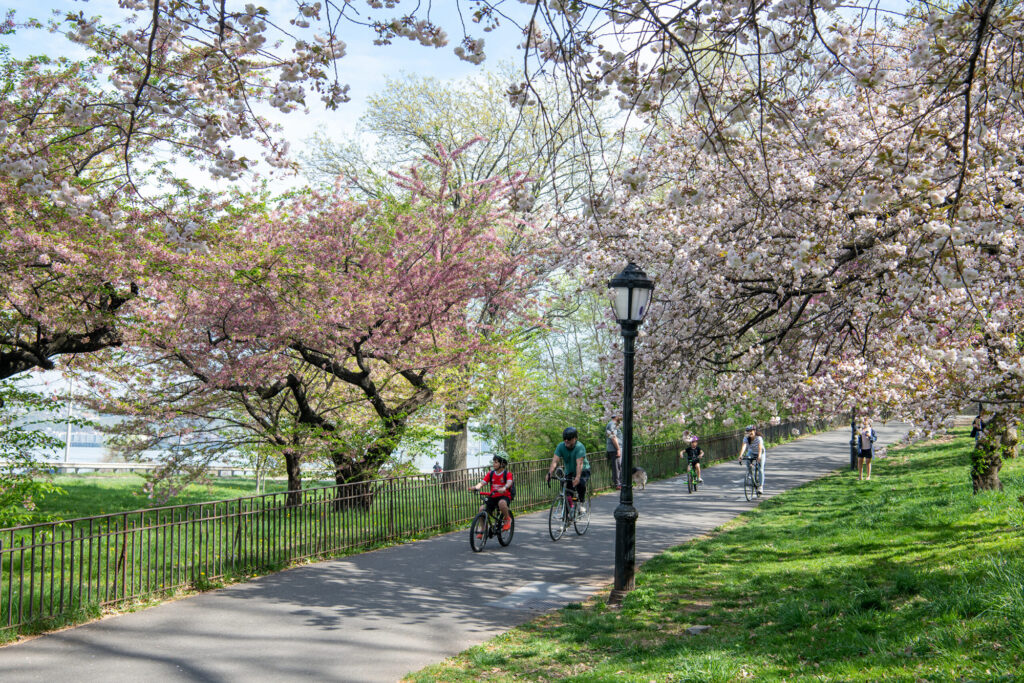
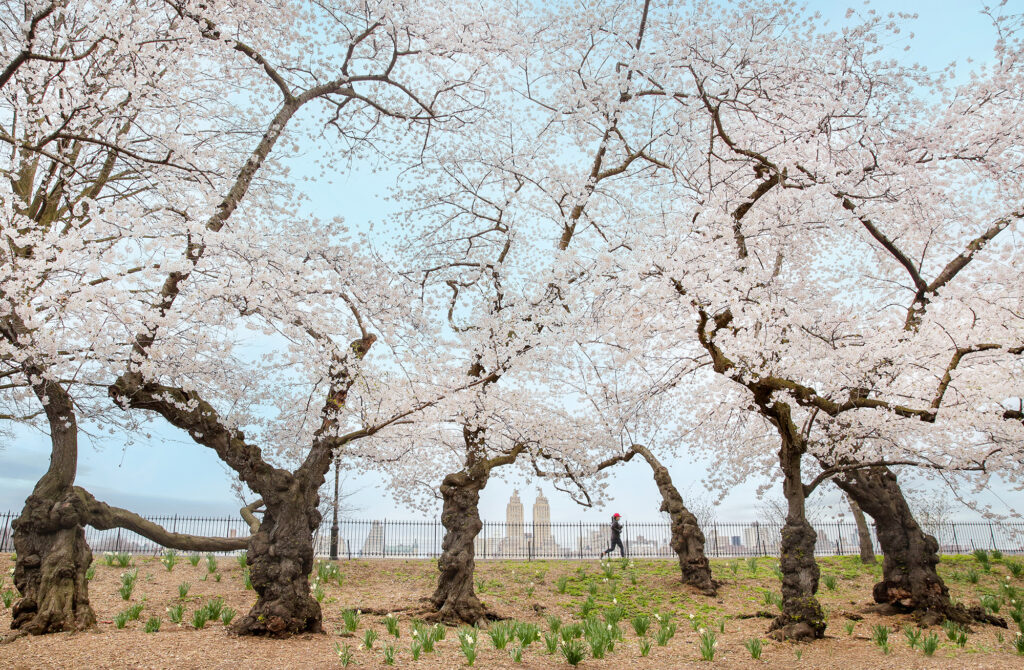
Central Park has 15 different locations with cherry blossoms, the highest concentration being around the east and west sides of the reservoir. There is a glade of Kwanzan trees just west of the Alice in Wonderland statue, and Cherry Hill looks out over the Bow Bridge. A map and description of all the locations can be found here.

Across the river, in Newark, NJ, the Essex County Branch Brook Park boasts the most trees (5,300) and greatest variety (18) of cherry blossoms in one location anywhere in the U.S. Their blossom festival runs through the first half of April. That, other blossom-related events and a map are available on their site.
Cherry blossoms bloom in many other parks and gardens across Jersey; the Rahway River Park is particularly picturesque.
The Japanese Garden in Buffalo’s Delaware Park holds a cherry blossom festival in the second half of April.
Long Island’s Planting Fields is the home to many different flowering trees, including cherry blossoms. A full listing is available on their website.
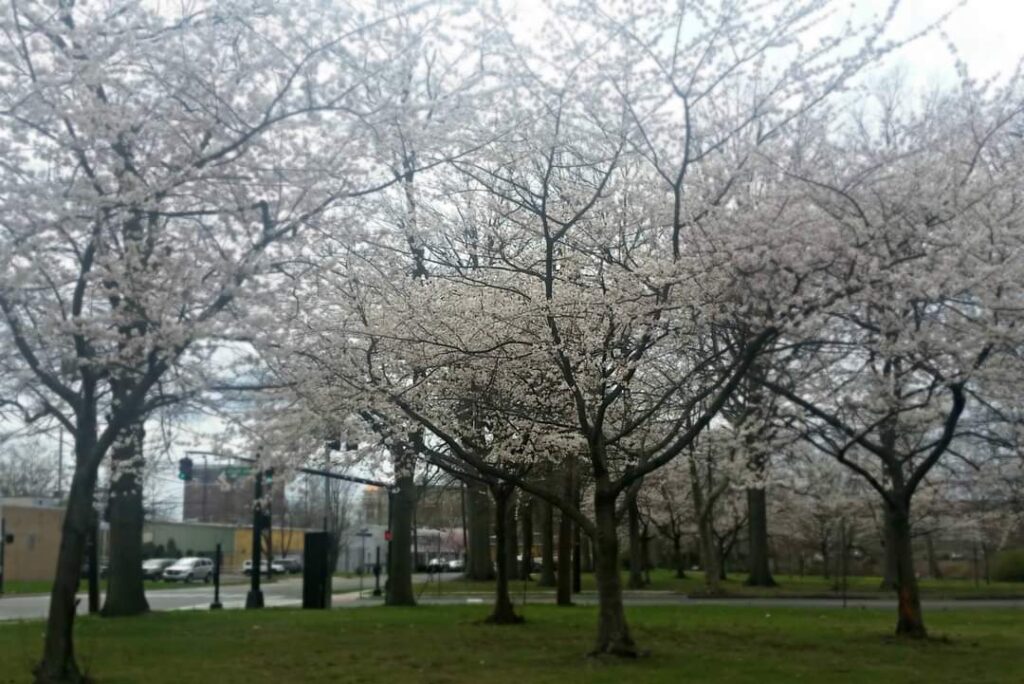
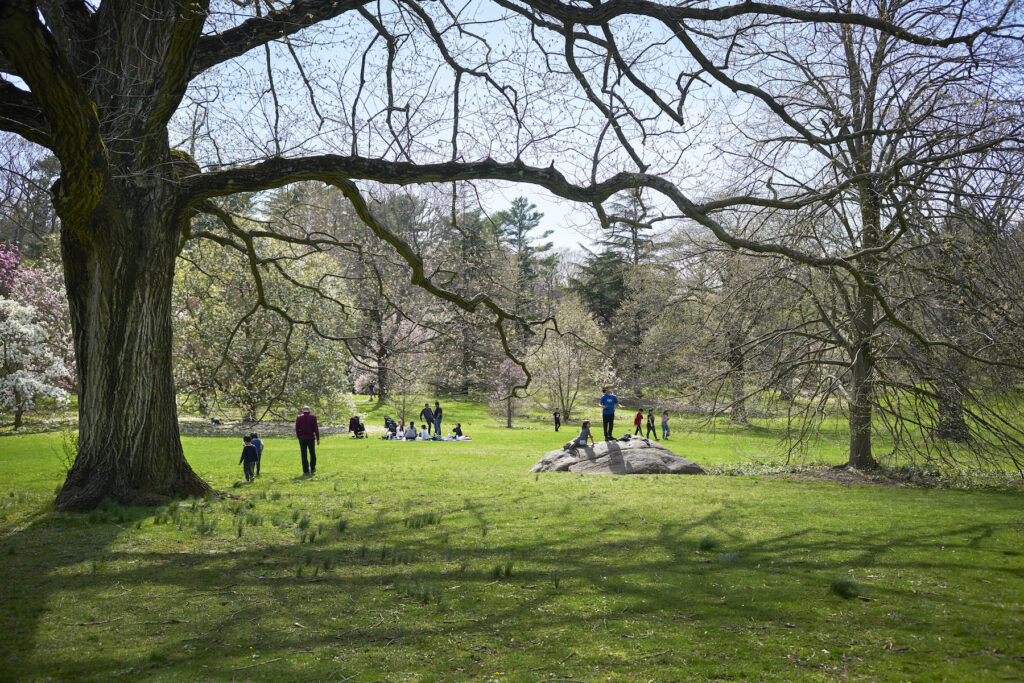
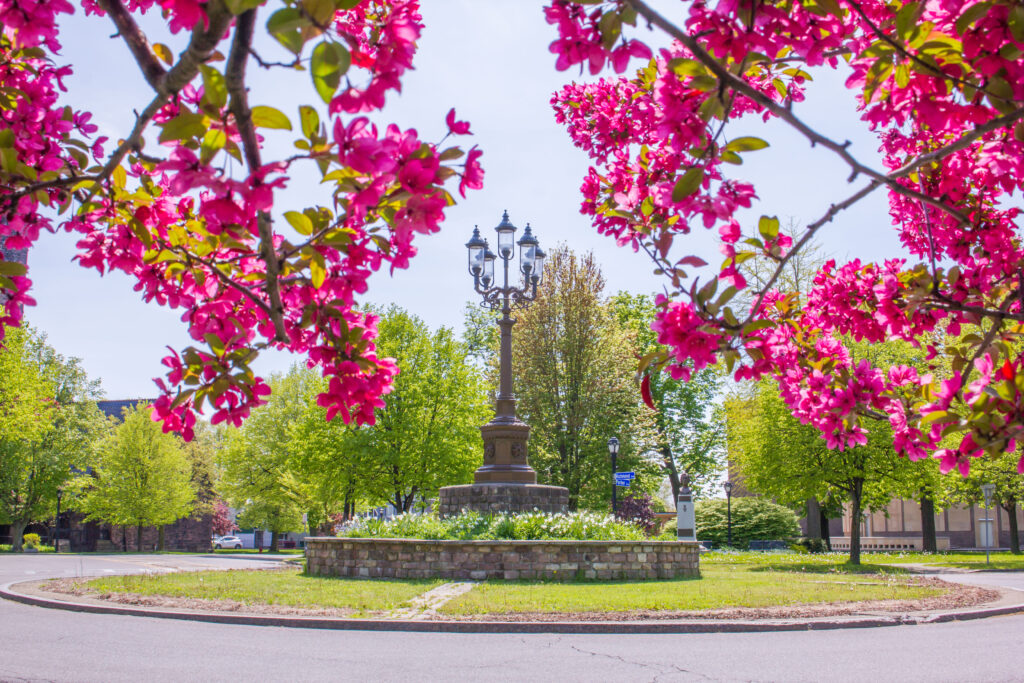
Of course, The Brooklyn Botanical Garden is well known for its seasonal blossom festival. Their website includes a “Cherrywatch” feature that provides updates on how far along each tree is in its bloom, along with a lot of other useful information.
The Arnold Arboretum in Boston includes several spectacular varieties in their collection, mostly as part of the Bradley Rosaceous Collection. A map and much more information can be found on their website.
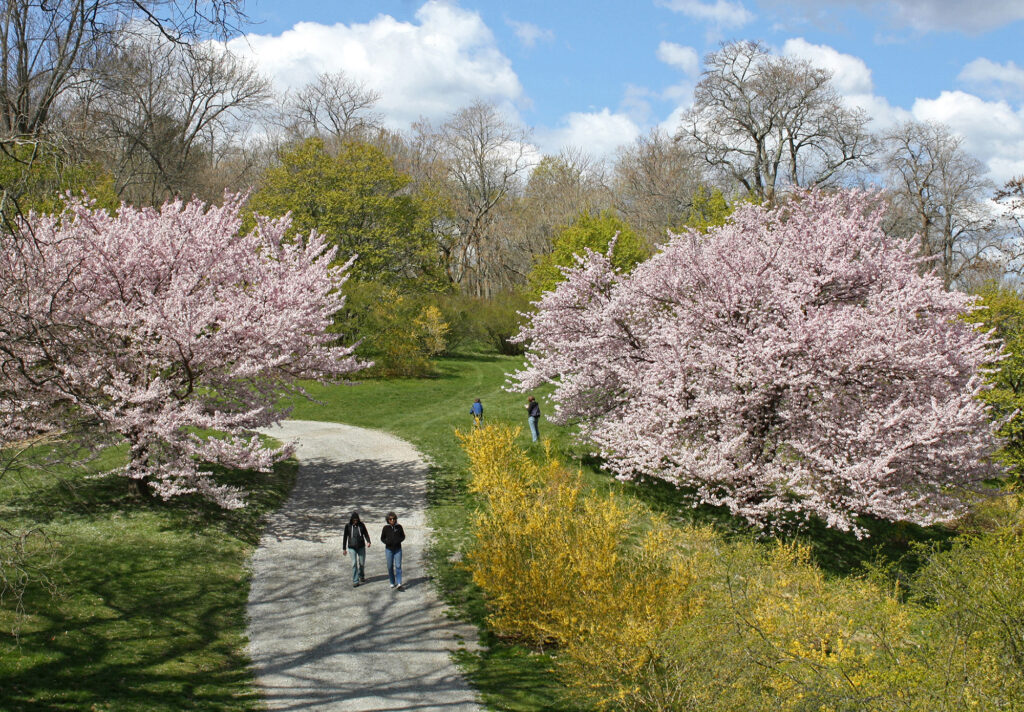
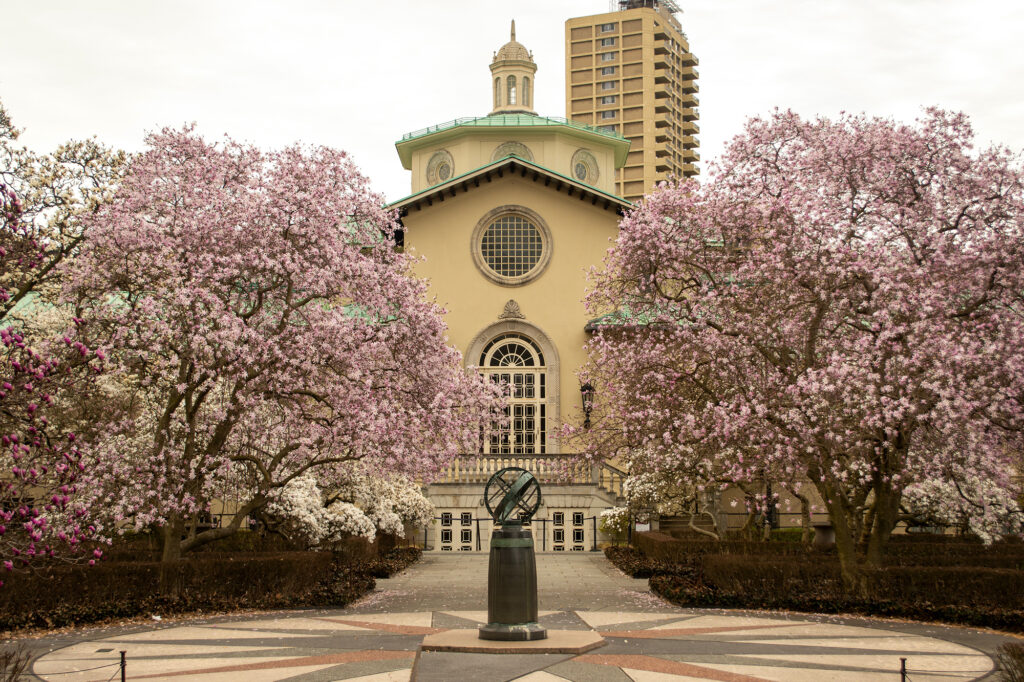
All across the country— our partners are proud of their botanical collections! Though not originally planted by Frederick Law Olmsted, the Japanese cherry blossom trees act as a vibrant white and pink strand in the ribbon that links these spectacular, historic parks and places together.
Does your Olmsted property feature cherry blossoms? We would love to see and share your photos of this exciting time of year.









